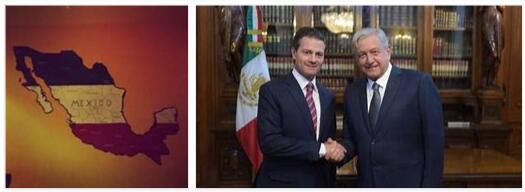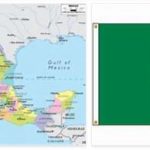
Mexico Economic and Financial Policy Between 1979 and 1981
The three-year period 1979-81 was characterized by rapid economic growth and a progressive deterioration of the balance of payments, the deficit of which was financed through a massive recourse to debt. In particular, the external debt went from 43 to 78 billion dollars in this period. Furthermore, due to the growing mistrust of operators, there have been progressively huge capital outflows which have aggravated the already precarious conditions of the external accounts.
In 1982 a period of profound economic and financial crisis began. In August, due to the concomitance of inadequate economic policies and unfavorable external conditions, linked to the ongoing recession in industrial countries and the increase in international interest rates, the country ran into liquidity problems that led to the suspension payments relating to the service of the external debt. In particular, the ratio of interest payments on foreign debt to exports went from about 16% to about 22% between 1981 and 1982. Following this crisis, a cooperative mechanism was set in motion in which the International Monetary Fund (IMF) played a decisive role. In particular, a complex financial package was negotiated which included the the adoption of a recovery program by the country, the redefinition of the maturities of debts owed to public and private creditors and the disbursement of new loans by commercial banks. The main objectives of the consolidation program agreed with the IMF were the reduction of the government deficit, which was considered the main cause of the deterioration of the external accounts and the acceleration of inflation, the depreciation of the exchange rate and the adoption of restrictive monetary policies. As a result of the measures taken, the general government deficit fell from 15 to 7% of GDP between 1982 and 1984. Positive results were also achieved as regards the current account balance which was brought over the same period from a position of deficit to a surplus. For Mexico 2017, please check mathgeneral.com.
In the first part of 1985 there was a relaxation of consolidation efforts and a new increase in the public deficit. A worsening of the current account balance also took place due to the buoyant development of domestic demand and the real appreciation of the exchange rate. Towards the middle of the year, however, there was a reorientation of economic policies including a sharp depreciation of the exchange rate, the adoption of measures to restore the public balance and a credit squeeze. However, the situation worsened again in the second half of 1985 following the violent earthquake that hit Mexico City and the collapse of oil prices which caused both a drop in public revenues and a drop in the value of exports. Therefore, in 1986 the public deficit widened strongly, reaching 13% of GDP. This trend was also affected by the increase in the inflation rate which caused a rise in interest expenditure on public debt. Despite the development of non-oil exports and the compression in volume of imports, the balance of payments recorded a deficit of 1.7 billion dollars.
Following the deterioration of the economic situation, in July 1986 Mexico adopted a new consolidation program agreed with the IMF. In addition to reducing the government deficit, this program included measures to liberalize imports in order to expose the economy more to international competition and to improve the allocation of resources. Positive results were achieved with regard to the external accounts which were reported in surplus in 1987. The inflation rate however accelerated further, reaching 132%. There was also a modest economic recovery, but national income remained lower than in 1981.
The rehabilitation efforts pursued have allowed Mexico positive results since the end of the 1980s. Measures taken include the elimination of subsidies to businesses and consumers, extensive deregulation of prices and the adoption of an extensive privatization program. Monetary policy remained restrictive. These measures led to the elimination of the public deficit and the lowering of the inflation rate to levels just above 20%. The improved economic prospects have also reopened the country’s access to international financial markets and favored the partial return of capital that fled abroad in the early 1980s. National income grew by over 3% per year in the 1990-92 three-year period. The most worrying results concern the external accounts, with a current deficit which in 1991 exceeded 13 billion US dollars and in the first half of 1992 had already reached 5.5 billion. This large external deficit is partly due to a consumer boom and in part to a considerable expansion of Mexican imports of capital goods.
In recent years, Mexico has committed itself along the way of a progressive opening of the economy towards foreign countries and a broad process of privatization. In 1987, Mexico joined the GATT and, since then, has lowered its average tariff on imports from 45% to around 9%. Mexico is currently engaged in an attempt to promote an export-based development process. It is in this framework that the creation in 1992 of a free trade area with the United States and Canada, the North American Free Trade Agreement (NAFTA), is placed in an attempt to expand trade exchanges with the richer North American states and attract the capital needed to finance the growth of the Mexican economy.







